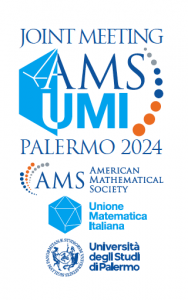For information on the rooms of Invited Address Lectures, visit the following web page.
Please find below more information on the speakers and their talks.
Michele Benzi (Scuola Normale Superiore, Pisa, Italy)
Chairperson: Nicola Guglielmi
Title: An overview of localization results for functions of large matrices
Abstract. Functions of matrices (more generally, operators) have long attracted the interest of mathematicians and arise frequently in physics and other fields. An interesting property of (smooth) functions of large and sparse matrices is that they tend to be strongly localized, i.e, most of the nonnegligible entries are concentrated in certain locations; for example, if A is a banded Hermitian matrix, the entries of exp(A) decay super-exponentially in magnitude moving away from the main diagonal. This property is shared to some extent by more general matrix types and functions, with the precise rate of decay depending on the regularity of the function and on the distance between possible singularities and the spectrum (or numerical range) of the matrix. In my talk I will give an account of recent results on localization for matrix functions and describe some applications to quantum chemistry.
Sara Daneri (GSSI, L’Aquila, Italy)
Chairperson: Piermarco Cannarsa
Title: Continuous symmetry breaking: a rigorous approach
Abstract. At the base of spontaneous pattern formation is universally believed to be the competition between short range attractive and long range repulsive forces. Though such a phenomenon is observed in experiments and simulations, a rigorous understanding of the mechanisms at its base is still in most physical problems a challenging open problem. The main difficulties are due to the nonlocality of the interactions and, in more than one space dimensions, the symmetry breaking phenomenon (namely the fact that the interactions have a group of symmetries larger than the expected minimizers).
In this talk we will present a new rigorous approach which allows us to prove symmetry breaking for a class of functionals with isotropic interactions. In particular, we show that in a regime in which the competing interactions are of the same order, minimizers are one-dimensional (i.e. stripes/lamellae). This class of functionals includes physical energies related to pattern formation in thin magnetic films and colloidal systems. This work has been obtained in collaboration with E. Runa.
Christopher Hacon (The University of Utah, USA)
Chairperson: Antonella Grassi
Vieri Mastropietro (Università degli Studi di Milano, Milano, Italy)
Chairperson: Marco Sammartino
Title: Rigorous Renormalization Group: advances and perspectives
Abstract. Renormalization Group can be implemented in certain cases in a mathematically rigorous form, leading to series expansion for physical quantities which are convergent, so excluding non perturbative phenomena, and to take into account lattice or symmetry breaking terms. This approach has recently found several applications, including the non-renormalization properties of the anomalies in QFT with finite cut-off (non perturbative Adler-Bardeen theorem), the universality properties of transport coefficients in interacting Graphene or Hall systems and the issue of localization with quasi-periodic disorder and interaction.
Open problems and perspectives will be also briefly discussed.
Lisa Piccirillo (MIT, Boston, USA)
Chairperson: Loredana Lanzani
Title: Exotic phenomena in 4-manifold topology
Abstract. In favorable circumstances, topological 4-manifolds can be classified. In contrast, smooth 4-manifolds remain poorly understood. Several hard questions in 4-manifold topology boil down to asking whether there can be distinct smooth manifolds with the same topological type; such manifolds are called exotic. In this talk I will discuss a few methods to demonstrate exotic phenomena, and comment on how these methods might be adapted towards addressing these hard questions.
Karen E. Smith (University of Michigan, USA)
Chaiperson: Brian Boe
Title: Extremal Surfaces
Abstract. Let X be a smooth complex surface in projective three-space of degree d at least 3. It is well-known that there is a quadratic upper bound on the number of lines on X in terms of d. Explicit quadratic upper bounds were given by Clebsch, Segre and others, including recently Bauer and Rams, who showed their bound works also for surfaces of prime characteristic p, provided p>d. But what about the general case of a surface whose degree might be large relative to its characteristic? In this talk, we discuss a new *sharp* upper bound on the number of lines on an arbitrary smooth surface in P^3 of degree d, valid in every characteristic. This sharp bound is *quartic* in d. We also discuss some amusing properties of the “extremal” surfaces that admit these usually large numbers of lines.

